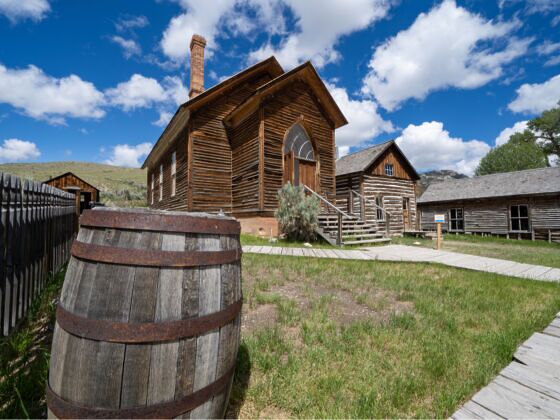TO FIND OUT what it takes to be a hut master, I contacted Dave Herring, executive director of Maine Huts and Trails. He said that being part of a hut crew is much like other jobs at lodges, with the difference that there’s little job specialization at the smaller huts.


“The crew does a bit of everything,” said Herring. They “clean, cook, provide info to guests, stack wood, patrol trails, et cetera.” Hut crew are full-time, year-round staff, and generally work ten-day shifts followed by three to four days off.
Having the right expectations before applying is key. According to Herring, the most common misconception held by applicants is that they’ll be outside all of the time.
“They do get plenty of time to get out and recreate,” he said, “but the jobs are primarily indoors.” Aside from some trail work in the summer and running groomers to keep the trails ski-able in winter, the essential duties are hut-related.
Employees handle jobs ranging from keeping the boilers and fireplaces going to cooking for up to 50 guests. They also spend time refilling the solar electricity system’s lead-acid batteries with water, adding wood chips to the composting toilets and cleaning up after guests.
And the perks? “Living in incredible places. Interacting with really interesting people, guests and other staff.”
Getting the Job
There are two main full-service hut systems in the US. The Appalachian Mountain Club maintains eight huts, while the smaller Maine Huts and Trails runs two, with a third scheduled to open later this year. Both make it easy to apply for hut crew positions with instructions listed on their websites.
With only four crew members working each hut, competition can be higher than for many other jobs. A resume outlining relevant experience will help your application move to the top of the pile.
Because of the customer service involved, the biggest qualification for getting a job with a hut system is previous experience working with the public. Herring said he is always looking for “outgoing personalities and a strong desire to work with a team of others to serve the visiting public,” and that “food service and outdoor skills are a plus.”
Hut employment opportunities exist in other parts of the world as well, with several full-service hut systems in Europe and New Zealand. In addition, hut systems that aren’t full service, like the 10th Mountain Division Huts in Colorado and the Mount Tahoma Trails Association in Washington, need volunteers to stock pantries, stack firewood, and maintain trails.
Community Connection
Matador Trips shares The Most Spectacular Treks Worldwide.